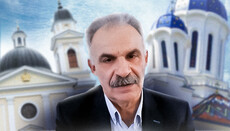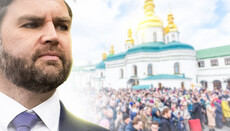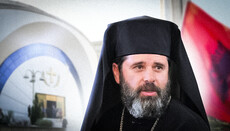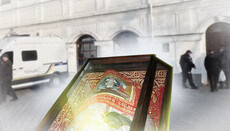Schismatics at Agion Oros: who and why let OCU members onto the Holy Mount
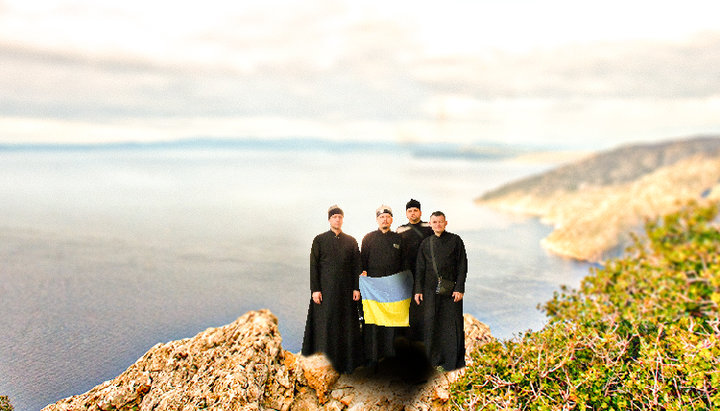
Why the Ukrainian schismatics paved their way to Mount Athos long before Tomos was received.
On June 4, 2019, the official website of the Ukrainian Orthodox Church reported that all pilgrims of the UOC on Athos need special references:
"The Office of the Kiev Metropolis of the Ukrainian Orthodox Church brings to your attention the blessing of His Beatitude Metropolitan Onuphry of Kiev and All Ukraine, according to which, in response to the request of the hegumen of the Holy Mount Athos, clerics, monks and laity of the Ukrainian Orthodox Church must have a certificate of affiliation with the Ukrainian Orthodox Church.
The Certificate indicating the period of stay must be drawn up on the letterhead of the eparchial administration, signed by the eparchial bishop and sealed.”
The text says that the initiative came from the hegumen (it does not say whose exactly) of Mount Athos.
On 6 June, Orthodox blogger Max Klimenko on his Facebook page published information about his conversation with the abbot of the Simonopetra Monastery, Archimandrite Elisaios:
“To my direct question if the Simonopetra Monastery sent a request to His Beatitude Metropolitan Onuphry to supply the pilgrims from Ukraine with a certificate of affiliation with the Ukrainian Orthodox Church of the Moscow Patriarchate (otherwise they would be denied entry to Athos), Fr. Elisaios made a surprised face and replied that neither he nor any of the Athos superiors known to him had ever asked Kiev to make such a request ... As for the possibility of co-serving and generally taking sacraments by clerics and monastics (not laymen), then, according to the archimandrite, the only paper that can be required on Athos is the blessing from the office of the Constantinople Patriarchate (because Pat. Bartholomew is the ruling bishop of Athos). No other papers, especially for the laity, are required. Fr. Elisaios also expressed regret that some people try to use the authority of the Holy Mount Athos for their own selfish interests. The Holy Mountain, as the Athonite hegumen noted, has always been and remains a common Orthodox shrine, where with prayer and love all pilgrims are received, making no national or whatever differences. He also assured that in the monastery of Simonopetra a prayer is offered daily to the health and well-being of His Beatitude Metropolitan Onuphry of Kiev and to his blessed flock.”
Generally speaking, the hegumen of Simonopetra Monastery said only what he knew, namely: he did not personally send such a request and does not know whether someone else did it.
However, many supporters of the Ukrainian autocephaly reacted to the words of hegumen Elisaios in their own way and were quick to announce that the Kiev Metropolis was replicating fakes.
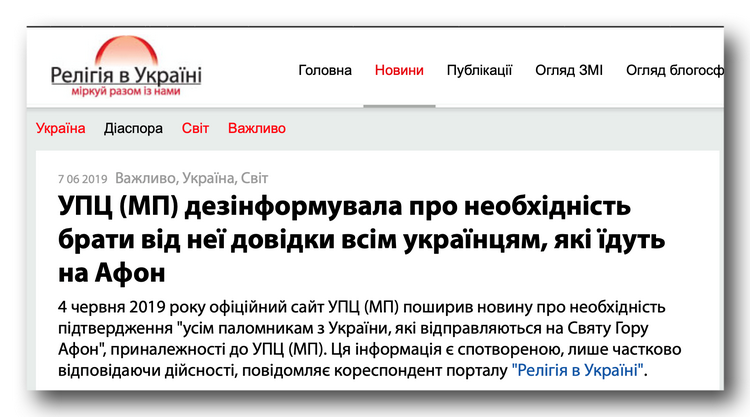
The media began to write, as if the circular of the metropolis meant all the hegumen of Athos, while the hegumen of Simonopetra Monastery denied this.
Later, Max Klimenko himself commented on the situation: “I (according to the words of Archim. Elisaios) wrote that neither he personally nor the abbots known to him had sent any requests to Kiev. This does not exclude at all that someone from the hegumen could have sent such a request – that is his right. All the rest is speculation.”
This post by Klimenko compelled the OCU-sympathetic information resources to correct their messages: “As we have found out, this is about the initiative of the hegumen of certain Athos monasteries who do not want to serve with representatives of the semi-recognized Orthodox Church of Ukraine and therefore, want to know what kind of church the people from Ukraine represent.”
We don’t know what the words about the “semi-recognized OCU” mean as of today, out of 15 Local Orthodox Churches, only the Patriarchate of Constantinople has tarnished itself with communal praying (which is called “recognition” in Orthodoxy) with the Ukrainian schismatics.
Another thing catches an eye – even anti-church resources have to agree that there could well have been a request for documents confirming affiliation with the canonical Church. There is no doubt that among the monasteries of the Holy Mount there are those that do not require this certificate.
Who are prohibited to enter Athos
A lot of monasteries hardly ever deny pilgrims an overnight stay. Recently, however, some monasteries not only do not turn down pilgrims from Ukraine for the night, but do not even allow them to worship the shrines.
This position is due to the fact that after the Patriarch Bartholomew had granted the Tomos to the Ukrainian schismatics, a number of them have now openly rushed to Athos. Very often, these people go to the Holy Mount not for prayer but to make some kind of show from their trip, which should demonstrate that the Athonite people in every way support the OCU. For this end, schismatics from Ukraine take pictures with the monks from the monasteries, sing the country's hymn on the top of the Holy Mount, hang out flags, try to serve with Athonites, etc.
Lately, some monasteries not only deny pilgrims from Ukraine an overnight stay but do not even allow them to worship the shrines.
Naturally, the opponents of the anti-canonical actions of Patriarch Bartholomew do not like this. There are a lot of such opponents on Athos who prefer not to let representatives of the OCU into their monastery in order to avoid any contact with them than to let them in, but then to be among the imaginary supporters of this dubious structure.
Therefore, the problem with the Ukrainian pilgrims really exists. Many people report on Facebook that Athonites (not all, of course) inquire Ukrainians what jurisdiction they belong to.
Tatyana Dvorovaya: “Our priests have just returned from Athos. Everywhere it is strictly asked who they are from when they find out that they are from Ukraine. Having learned that pilgrims are from His Beatitude Onuphry, they are happy to receive them, always send best regards to the Metropolitan, they pray for him and us.”

Basil Elachistos: “Monasteries accept all people regardless of their confessional affiliation. But some, such as Costamonit, have some restrictions: they do not accept clerics of the OCU.”

Yuriy Strugov: “For example, we were not received at St. Andrew's Skete once they heard we were Ukrainians. The hegumen ordered not to receive us. And the elder Gabriel did not receive us either. He (elder Gabriel – Ed.) did not do it because we are from the Patriarchate of Constantinople. As the novice said, he no longer commemorates the patriarch.”
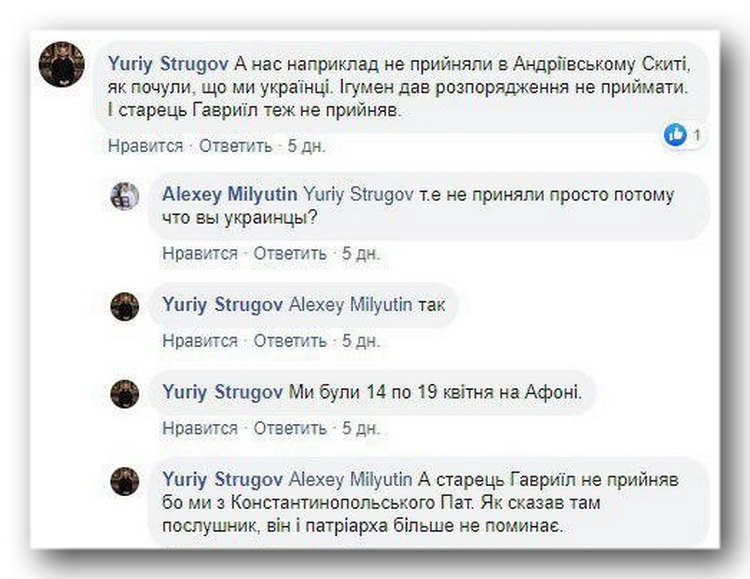
Those who really need such a certificate from the Kiev Metropolis can include not only the hegumen of the Russian St. Panteleimon Monastery, but also the hegumen of the Serbian monastery Hilandari, Bulgarian Zograf, as well as hegumen of St. Andrew's Skete. Ardent opponents of the legalization of the Ukrainian schismatics are called the abbots of the monasteries of Dochiariou and St. Paul’s.
Simonopetra Monastery and “the law of courtesy”
The hegumen of Simonopetra Monastery says that the law of hospitality is very important to Athonites. But in relation to the Ukrainian schismatics, Archimandrite Elisaios is guided not only by this law.
Since 2013, the Ukrainian oligarch and businessman Andrei Matsola has been listed as a monk of the monastery of Simonopetra. Here is a quote from the message of 2013 on the pilgrimage to Mount Athos by cleric of one of the churches Sergei Genov: "With great gratitude to my benefactors, businessman Andrei Matsola (donator of Simonopetra Monastery)."
Andrei Matsola is a major Ukrainian beer producer and, along with his brother, MP Roman Matsola, is the main sponsor of the UOC KP. One should admit it is not the most "correct" donator for the monastery of Athos.
Of course, the words of one person do not yet confirm a special position of Matsola for Athonites. After all, the status of donator on Athos is given by no means to everyone, and the name of benefactor, according to Byzantine tradition, is sometimes included in the full name of a monastery or a temple.
But in 2014, Sergey Genov published another message: “Andrei Matsola is a Kiev entrepreneur, a donator of Simonopetra monastery (I know that besides Simonopetra, Andrei financially supports other monasteries of the Holy Mount [not even to speak of Ukrainian ones]), he is a benefactor”. Following the statement of Genov, Andrei Matsola himself is depicted on one of the icons of the temple painting:
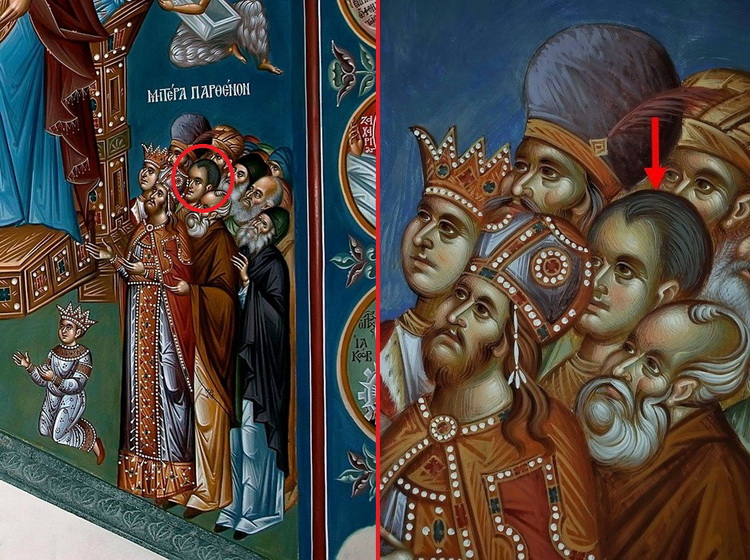
Furthermore, in the same 2016, Roman Matsola brought the icon of Mary Magdalene to his homeland from Athos, according to his website: “The icon, which was recently in Khmelnitsky region, was written by monks on Holy Mount Athos and handed it to the family of Roman Matsola as a token of gratitude for patronage over the monastery of Simonopetra."
The journey to Athos, as a result of which the icon of Mary Magdalene appeared in the churches of the UOC KP in Khmelnitsky region, Roman Matsola had with the clerics of this religious organization. This is explained very simply: the Matsola family had been successfully funding the Kiev Patriarchate for a long time. For such activities, the head of the UOC KP Filaret Denisenko distinguished the eldest brother, Roman, with awards.
In 2012, Andrei Matsola entered the “Kiev Orthodox Theological Academy of the Kiev Patriarchate” for extramural courses. That is the same Academy, whose rector Alexander Trofimliuk was recently banned from ministry by “honorary patriarch” Filaret.
By the way, according to Filaret, the Matsola family has compeltely switched to funding the OCU, so “Epiphany depends on Matsola”.
Thus, thanks to the financial assistance of Matsola, for almost three years before the Tomos was received, the monastics of the glorious Athos monastery of Simonopetra had quite favorably received the Ukrainian schismatics. Is it any wonder that the abbot of the monastery, Archimandrite Elisaios, denies the need for a certificate of affiliation to the UOC?
Koutloumousiou and Uraine
In this context, it is worth mentioning Koutloumousiou Monastery. One of the brethren of St. Panteleimon Monastery, hieromonk Chrysostom, attended the “enthronement” of the head of the OCU Epiphany Dumenko. But Kinot of the Holy Mountain decided not to send its representatives to the "enthronement" of Dumenko. Therefore, Father Chrysostom in Kiev was present not as a representative of the Athonite brotherhood, but as a cleric of the Constantinople Patriarchate.
At the same time, the abbot of Koutloumousiou was among those abbots (Iveron, Lavra and New Esphigmenou), who on February 28, 2019, at the meeting of the Holy Kinot of the Holy Mount Athos, expressed their support for the OCU.
It was exactly hieromonk Chrysostom, who wrote diamonitirion (special written permission to visit Mount Athos) for the Ukrainian delegation of schismatics, first in the history of Athos.

But, as in the case of the Simonopetra abode, the matter is not only about the law of hospitality.
In 2016, hieromonk Chrysostom and hierodeacon Chrysostom from Athos monastery Koutloumousiou came to Ukraine. Here, at the Open Orthodox University of St. Sophia of Wisdom, they read several lectures and met with Prime Minister Vladimir Groysman and Speaker of the Verkhovna Rada Andrei Parubiy. Why ordinary Athonite monks deserved such a solemn reception – we do not know. But it was during their visit that the news appeared that "near the monastery of Koutloumousiou, the construction of cells for guests from Ukraine had already commenced". These cells will be able to accommodate 60 people. On their territory there will be located two temples. Naturally, in this case, the sponsor was Andrei Matsola, who said: “We have a goal to create the Ukrainian centre on Athos, where any of the Ukrainians would be able to come, stay overnight, pray and feel to a certain extent like at home.”
It can be assumed that as far back as 2016, builders and cell donators expected to settle on its territory representatives of the new “Ukrainian Church”, the creation of which was already planned by Phanar.
On April 25, 2016, on the site of Roman Matsola there appeared the news entitled: "Thanks to Roman Matsola, the pilgrims visited the Holy Mount Athos."
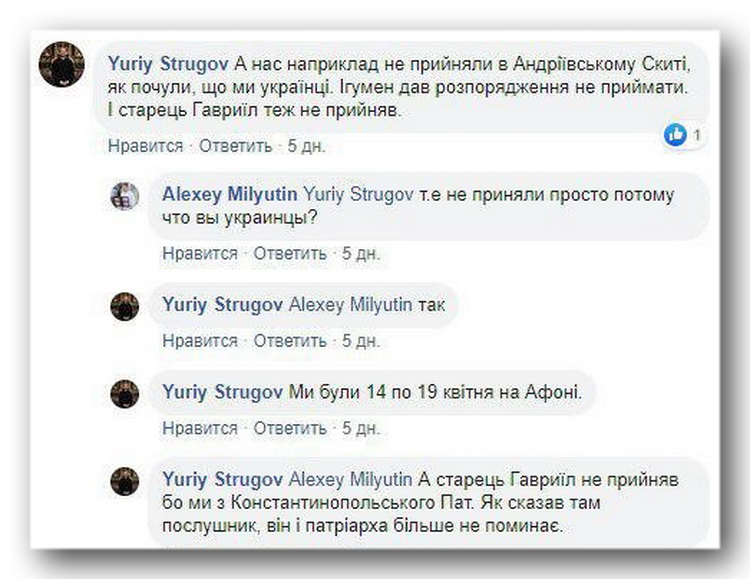
Among the enthusiastic reviews about the trip, attention is drawn to those that were signed by the "priests." The first review is especially interesting – “priest” Vasily Getman (in the photo stands in the center, in the skoufos), who says that the travelers performed a worship service at St. Panteleimon skete – the very one whose representatives were later present at the enthronement of Epiphany. It follows that the Ukrainian schismatics were not only accepted in this hermitage, but also allowed to serve. Note that it was in 2016, before the Tomos from Patriarch Bartholomew was granted!
How do we know that those "priests" belonged to the UOC KP? From the message of Shepetovka newspaper “Day by Day” dated April 20, 2016:
"During the morning service in the monastery of Great Martyr and Healer Panteleimon, which is traditionally carried out in the Greek language, our priests – dean of Polonnoye district of the UOC KP Archpriest Andrei Moravsky, Father Vasily Getman (Shepetovka), Father Vasily Pavliuk (Gartsev), Father Sergiy Skorobogaty (Sudilkov ) and Father Alexander Sleptsov (Kipchintsy) – pronounced the prayers “I Believe” and “Our Father” in Ukrainian, our pilgrims confessed and received the Holy Sacrament.”
By the way, this skete is located near Koutloumousiou Monastery, to which it belongs. It was founded at the end of the XVIII century and, of course, has nothing to do with the eponymous Russian Monastery on Mount Athos.
It turns out that as far back as 2016, the aforementioned Chrysostom in his cell gave the Eucharist to the servants of the Kiev Patriarchate, who had arrived at the skete of Koutloumousiou Monastery as part of a pilgrimage group led by MP from Petro Poroshenko’s Bloc Roman Matsola.
However, despite this fact, now the situation around the recognition of the Ukrainian schismatics by the monastics of Koutloumousiou Monastery, as well as the monasteries and cells belonging to it, has somewhat changed.
5 out of 12 signatories of the much talked-of letter of the Athos elders, who demanded that Kinot forbid the entry of OCU representatives to the Holy Mount, come from Koutloumousiou.
The position of the abbot of the monastery, who resolved to admit the representatives of the OCU to the shrines of the monastery (but forbade them to serve in the territory of Koutloumousiou), caused rejection of a certain part of the monastic community.
According to Filaret, the Matsola family has now completely switched to funding the OCU, so “Epiphany depends on Matsola”.
The publication Strana.ua reported that “on April 13, a certain hieromonk from Ukraine, Paisiy Krill, brought three wealthy parishioners of the OCU to Koutloumousiou. They received the Eucharist there. When one of the Russian-speaking novices found out who they were, he announced that to the brethren right during the meal. Then one of the aforementioned Chrysostoms (but not the one that attended Epiphany’s “enthronement") approached him and “spelled it out that they were friends of the monastery, while their being schismatics was a personal opinion of this Russian novice.”
At the moment, the Koutloumousiou abbot, though treating Andrei Matsola with great respect, took a neutral position with regard to the Ukrainian schismatics. We cannot say for sure what it is connected with. Perhaps, the position of the hegumen has changed due to the protest of the brethren, or perhaps, to the fact that the hegumen decided that the observance of canons is more important than the construction of the abode.
From all of the above, we can conclude that everything is not so simple and unambiguous on Athos as supporters of the OCU try to present. Indeed, there are a lot of monasteries and individual monks on the Holy Mount which require or may require from the Ukrainian pilgrims a document on their affiliation with the canonical Church. Of course, there are those who prefer not to delve into the issues of church canons but to trust the actions of Patriarch Bartholomew.
After all, even if on Mount Athos, which is directly subordinated to Patriarch Bartholomew, many do not agree with the recognition of the Ukrainian schismatics, then those who do not depend on Phanar in any way will disagree all the more. Moreover, the problem with recognizing the OCU will only get worse over time. And neither money, nor deception, nor persuasion or intimidation can influence the fact that they, schismatics, should seek repentance rather than recognition. In all other cases, schismatics will remain schismatics, while the Church will remain with Christ.
